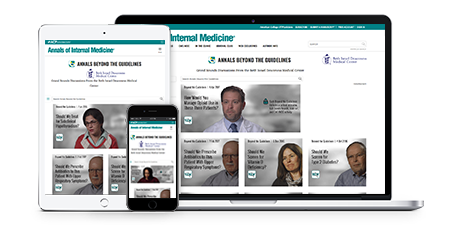Annals Beyond the Guidelines
Male hypogonadism is defined as an abnormally low serum testosterone concentration or sperm count. As men age, often in the context of obesity and other comorbid conditions, serum testosterone levels may decrease. Normalizing serum testosterone levels in male adults with hypogonadism may improve symptoms related to androgen deficiency, but controversies exist regarding the long-term benefits and risks of hormone supplementation in this setting. In 2020, the American College of Physicians published a clinical guideline for the use of testosterone supplementation in adult men based on a systematic review of available evidence. Among their recommendations were that clinicians discuss whether to initiate testosterone treatment in men with age-related low testosterone with sexual dysfunction who want to improve sexual function and not initiate testosterone treatment in men with age-related low testosterone to improve energy, vitality, physical function, or cognition. Here, two clinicians with expertise in this area, one a generalist and the other an endocrinologist, debate the management of a patient with sexual symptoms and a low serum testosterone level. They discuss the diagnosis of male hypogonadism, the indications for testosterone therapy, its potential benefits and risks, how it should be monitored, and how long it should be continued.
CME/MOC:
Up to 5
AMA PRA Category 1 Credits ™ and MOC Points
Expires August 10, 2024
expires-soon
Cost:
Free to Members
Format:
Video Recordings
Product:
Annals Beyond the Guidelines
From Annals of Internal Medicine (annals.org), Beyond the Guidelines is an educational feature based on recent guidelines. Each considers a patient (or patients) who "falls between the cracks" of available evidence and for whom the optimal clinical course in unclear. Presented at Beth Israel Deaconess Medical Center (BIDMC) Grand Rounds, each conference reviews the background evidence and experts then discuss the patient(s) and field audience questions. Videos of the interviews and conference, the slide presentation, and a CME/MOC activity accompany each module.



